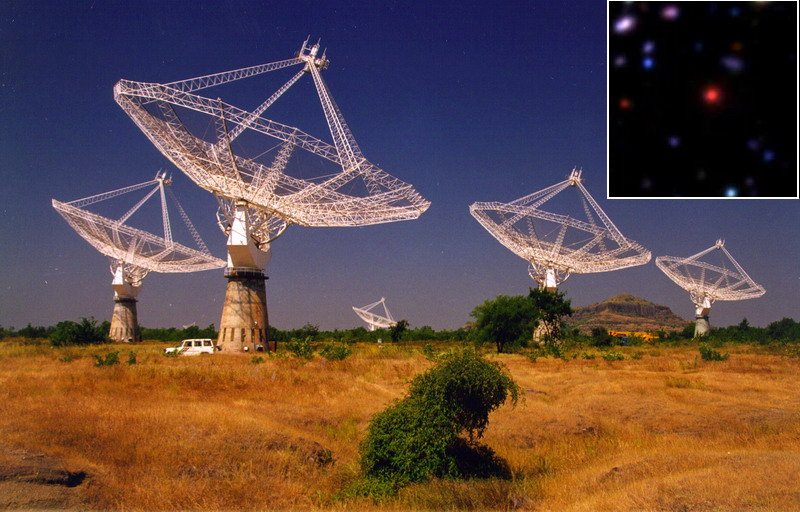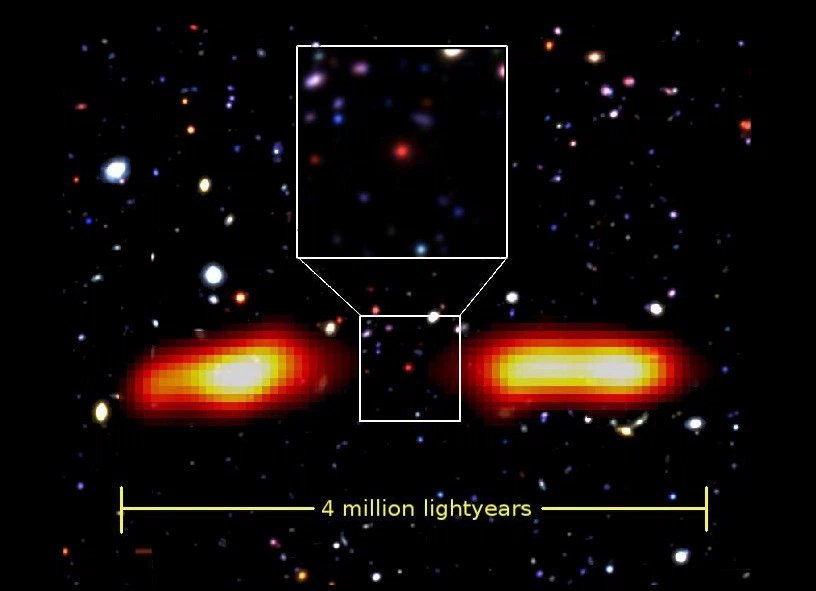MessageToEagle.com – Giant radio galaxies (GRGs) are the largest structures associated with single galaxies. However, they are very rare. About one galaxy in a million is a radio galaxy!
Now, an extremely rare galaxy of gigantic size – located about 9 billion light years away towards the constellation Cetus – has been discovered by a team of astronomers working at the National Center for Radio Astrophysics (NCRA, TIFR), Pune, India and using the Giant Meterwave Radio Telescope (GMRT).

The galaxy emits powerful radio waves and has an end to end extent of a whopping 4 million light years! Such galaxies with extremely large ‘radio size’ are appropriately called giant radio galaxies.
How do galaxies with an optical size of a hundred thousand light years produce radio emission several million light years in extent?

It is argued that the presence of a super massive black hole at the center of the galaxy drives large scale jets of hot plasma in diametrically opposite directions which eventually give rise to large radio lobes.
While radio galaxies with size less than a million light years are common, giant radio galaxies are extremely rare, even more so, at large cosmic distances where only a handful have been discovered so far. This newly discovered galaxy known by its scientific name ‘J021659-044920‘ is the newest member of this elite group.
Under some special circumstances, the central black hole may stop producing the radio jet, and then the bright radio lobes fade away, within a few million years, due to lack of replenishment. What makes J021659-044920 special, is that it has been caught in this dying phase, where the radio jet appears to have switched off and the radio lobes have started fading.
The fading of the lobes is caused by their losing energy in two ways, one, by emitting radio waves which show up as the gigantic radio lobes and two, by transferring energy to photons from the cosmic microwave background via a process known as inverse Compton scattering.
This latter mechanism leads to faint X-ray emission, which is seen to emanate from the radio lobes of this galaxy. Such dying radio objects are best studied using a low frequency radio telescope such as the GMRT.
MessageToEagle.com






